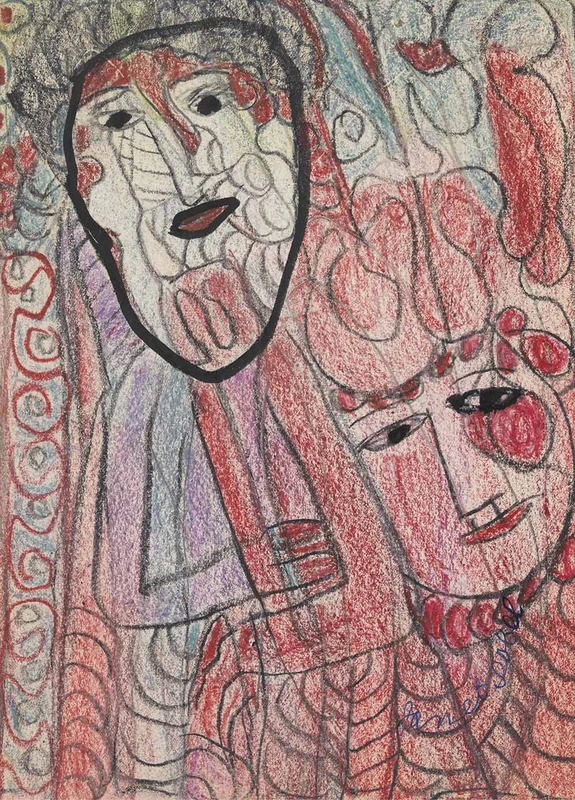Janet Sobel


b. 1890, Ukraine
d. 1968
Born in Ukraine in 1893, Janet Sobel is one of the unsung heroines of 20th century art. Her idiosyncratic and shape-shifting aesthetic was championed by collector Peggy Guggenheim, artist Mark Rothko and curator William Rubin.
Sobel’s self-taught practice began in humble circumstances when she began to sketch memories of her Jewish upbringing in Eastern Europe. These early works delighted with their swirling faces and bright colouration.
The imagery revealed an instinctive certainty of shape and form. It spoke not just of Sobel’s past, but of her identity in the new world. It also brought her to the attention of legendary gallerist and curator Sidney Janis, who included a painting by Sobel in his show American Primitive Paintings at the Arts Club of Chicago in 1943.
Sobel soon evolved a particular form of abstract expressionism, which in turn led to an enthusiastic reception by the great and the good of New York’s art scene. Sobel found herself welcoming artists like Max Ernst, Mark Rothko and even surrealist André Breton to the family home in Brooklyn.
Sobel was exhibited at Norlyst Art Gallery by Max Ernst’s son Jimmy in 1944; and her inclusion in The Women at Peggy Guggenheim’s Art of This Century gallery (along with Louise Bourgeois) led to a solo show in 1946.
Ad Reinhardt’s insiders’ art map of 1945, How to Look at Modern Art in America, locates Sobel alongside Mark Tobey, Arshile Gorky and André Masson; and it is widely accepted that her invention of so-called drip painting - whereby paint is dribbled and splattered across the canvas - was unashamedly borrowed by Jackson Pollock and revolutionised his trajectory.
Yet Sobel was not cut from the same cloth as her peers. She moved to New Jersey, stopped creating work and slipped out of the spotlight. Despite her stellar ascent, art history labelled her a primitive painter. Even the curator William Rubin’s support and patronage, acquiring paintings for the Museum of Modern Art in 1968, were not enough for a society fixated on the art-educated male gaze.
Sobel died in 1968. It would be almost 50 years before her work was again singled out for its influence and innovation. Her painting, The Milky Way (1945), is currently on display at the Museum of Modern Art in New York.